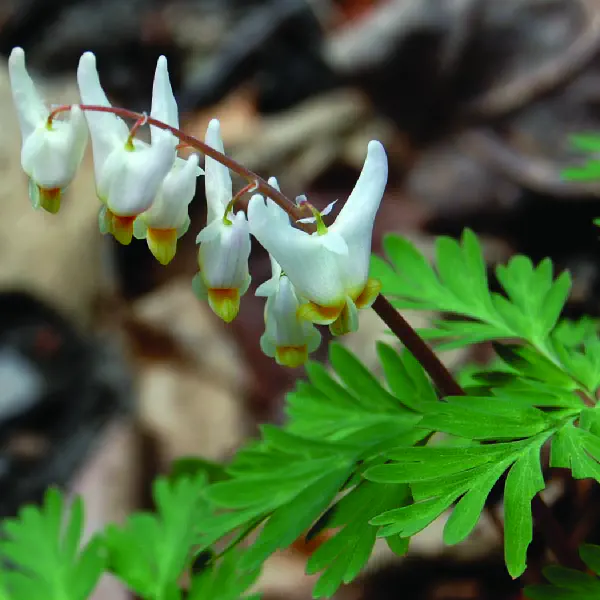Dicentra cucullaria
Table of Contents

Scientific Classification
| Kingdom: Plantae |
| Phylum: Tracheophyta |
| Class: Magnoliopsida |
| Order: Ranunculales |
| Family: Papaveraceae |
| Genus: Dicentra |
| Species: Dicentra cucullaria |
Conservation Status
Identifying Features
Dutchman’s breeches typically grow to a height of 10 inches tall. The flowers are distinctive with two spurs pointing up that resemble the legs of pants. The flowers are arranged in drooping clusters and dangling on a leafless stalk. The petals are white, waxy, and tipped with yellow near the bottom. The leaves are feathery, dissected, and grow near the base of the plant.

Habitat & Range
Dutchman’s breeches can be found in moist, shady woodland environments. They are native to eastern North America, extending from eastern Canada down to northern Georgia in the US.
Behavior
The flowers depend on insects, including bees and flies, for cross-pollination. After pollination, the plant can produces small seed pods that contain several seeds each.
Life Cycle
Dutchman’s breeches begin life as a seed that germinates in the soil. The plant flowers in the early spring, typically between April-May. After pollination, it produces a seed pod. During the summer months, the plant enters a period of dormancy where the leaves and stems die back to the ground.
Featured image by James Dake.

